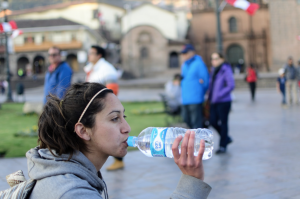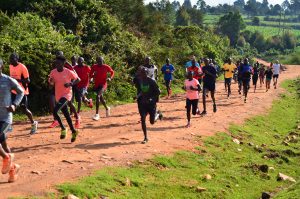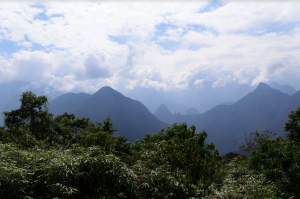Hey everybody!
Training at high altitude is a proven recipe for success for endurance athletes looking to take their performance to the next level, as training in conditions with limited oxygen in the air strengthens the cardiovascular system of athletes.
For those of you who are thinking about applying to a STRIVE program, but are concerned about acclimating to the high altitudes of Pisac, Peru (9,700 ft) or Iten, Kenya (8,000 ft), this post is for you! Hopefully by the end of this post, your fears about living at elevation will dissipate.
As a self-proclaimed high elevation veteran, here are my five tips for adjusting to life at high altitude:

2. Sleep! When you are at altitude, your body requires more recovery time than it would at sea level. This increased recovery time is a direct result of sleep disturbance at elevation (called high altitude sleep disturbance), and is generally caused by waking up at night to breathe. This condition is exacerbated with other factors present at elevation, such as a chilly, windy nighttime climate, and often-crowded sleeping quarters like in a high-mountain tent. It is highly recommended to go to bed as early as possible, to maximize the potential time available for rest. Additionally, many STRIVE volunteers opt to take an afternoon nap after lunch.
3. Take it slow! When dealing with altitude, it is always recommended to be slow and safe rather than sorry! 
4. Don’t forget to eat! When you first arrive at a higher elevation, chances are, you will not feel as hungry as you might at sea level. Although you might feel like you are expending fewer calories (due to the initial recommended decrease in exercise), the opposite is fact— your body requires more calories to function at altitude than at sea level, primarily because of the increased effort required to breathe. Be sure to consume plenty of foods that contain iron, as iron is a critical nutrient that is helps your red blood cells transport oxygen. You can find a great list of iron-containing foods here.
5. Appreciate the mountain scenery! After living at altitude for several weeks, you might start to take the crisp air, crystal clear water, and snow-covered peaks for granted. However, for most of us, our time at altitude is limited, and we will eventually have to descend to our prior obligations. While you are living at high elevation, be sure to take plenty of photographs, and take a moment to appreciate your surroundings while running (trust me, it makes the run pass by much quickly), or just walking around town.
Okay, these are my top five tips for adjusting to life at high altitude! To request a blog post on a particular subject, email tyler@strivetrips.org. If you have any questions or comments pertinent to adjusting to life at high altitudes, please leave them in the comments section below, and I will respond as soon as possible.


Leave A Comment